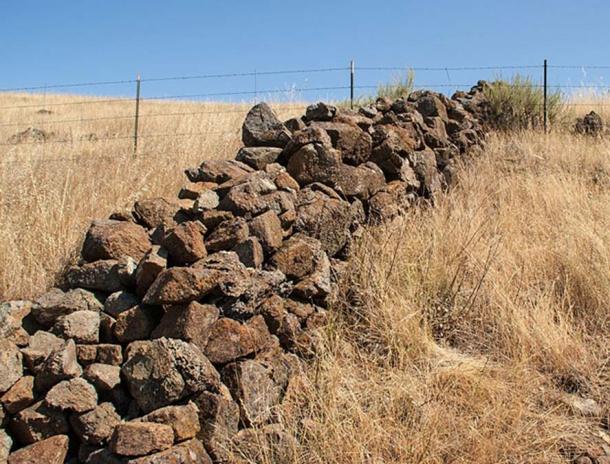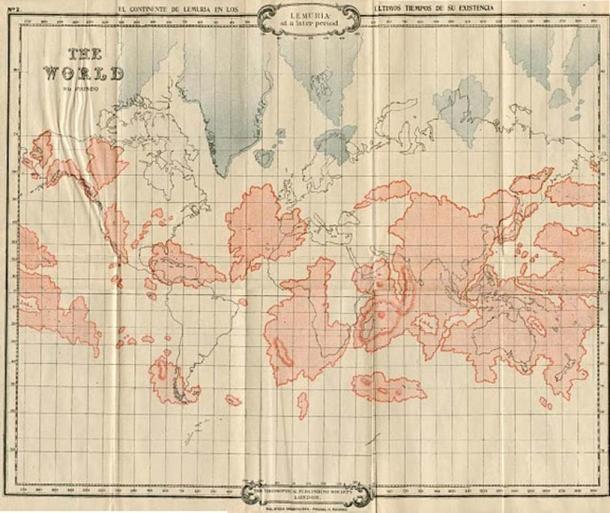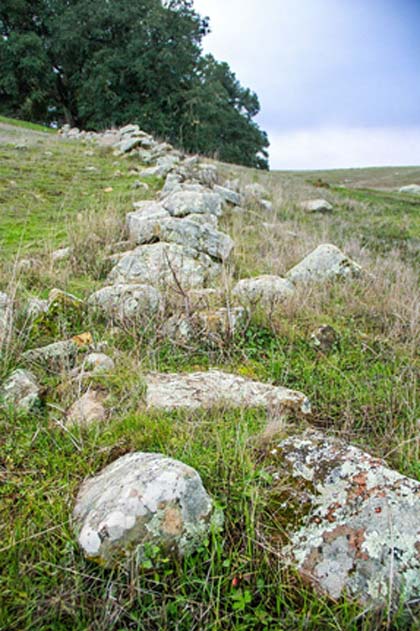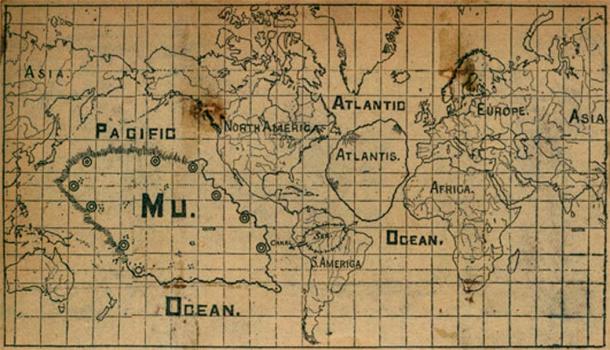
I just realized that those split rail fences made of cedar i grew up with and also removed by myself and my brother, were originally put in place in the 1840's or over a century earlier back in Ontario. Barb wire was not invented until 1874 and i am sure the machine to produce it just after. Thus we had a twenty year span in which stone removal supported fence making.
The article has a lot of hooey about Mu and Lemuria and now even admiral Zhang. none of whom ever came close to this area. The rehash on mu and Lemuria revisits nineteenth centuriy artistic material that has never been revisited.
understand that pre 12900 BP, we had all of the south China Sea above water including Indonesia. This is surely one or the other. Also we had a substancial island ridge between india and madagasgar also now underwater. understand that indian scripture reports a substancial geological event as well. The original written sources even come directly from india.
This is a discovery that demands a thousand eyeballs now.
Unravelling the Mystery Behind the East Bay Walls: Who Really Made Them and Why?
UPDATED 24 AUGUST, 2023 - 18:45 CALEB STROM
https://www.ancient-origins.net/ancient-places-americas/east-bay-walls-021337
In the hills around East Bay and elsewhere near San Francisco, there is a series of stone walls that extend discontinuously for miles. The walls are about 3-4 feet (a meter or so) high in most places and are not enclosed. There is also no record of them being built or who might have built them. Some interested investigators have suggested exotic explanations for them such as that they were built by the Chinese, the Mongolians, or even refugees from Mu or Lemuria. Others have suggested that the East Bay Walls were built by Native Americans or early European settlers with the help of Native American or foreign laborers. Recent analysis of the evidence, however, shows that these mystery walls might not be so mysterious after all.
Ancient Construction Speculations
The first scholar to mention the walls was University of California Berkeley professor John Fryer in 1904. Fryer suggested that the walls were built by Mongolians or the ancient Chinese based on his belief that “the Chinese would naturally wall themselves in.” The Chinese are a popular choice among some because of the popularity of the idea among fringe theorists that the Chinese admiral Zheng He made it to California and may have established a settlement. Another more extraordinary suggestion is that it was built either by Lemurians or refugees from Mu.

Philip Lutley Sclater, portrait and signature ( Public Domain )
The Lemurian and Mu Theories
The existence of Lemuria was first proposed in 1864 by the zoologist Philip Sclater to be a lost continent in the Indian Ocean which connected India to Madagascar before it sank beneath the waters. He originally postulated it simply to explain the similarity between certain fossils found in India and Madagascar even though they were not found in the intermediate landmasses between the two regions, Africa and the Middle East. The idea of Lemuria was popular among some scientists in the 19th century and early 20th century but was later abandoned as continental drift, which led to plate tectonics, became more widely accepted as an explanation for how animals from Madagascar reached India or the reverse without going through Africa or the Middle East.

Map of Lemuria according to William Scott-Elliott ( Public Domain )
The idea of the lost continent of Lemuria nonetheless remained popular among theosophists such as Helena Blavatsky who believed that Lemuria had been the home of a progenitor race to mankind known as the Lemurians whom they believed had coexisted with the dinosaurs. The Lemurians resembled humans except that they were taller and laid eggs. Many theosophists believed that the Aboriginal Australians and Sub-Saharan Africans descended from them.

A view of the East Bay Walls found around the southern and eastern San Francisco Bay in California. (Elf/ CC BY-SA 4.0 )
Mu is a similar concept. It was, and still is believed by some people to be a continent that once existed in the Pacific Ocean which sank in a manner similar to Atlantis. According to proponents of the Lemurian/Mu theory of the walls’ origins, refugees from the destruction of these continents came to places like Northern California and established civilizations which included features such as these mysterious stone walls.
Supporters of this view point out that we do not have any historical documents which record European settlers building the walls. Furthermore, the Native American tribes in the area say that they have no oral traditions of their ancestors building them and some say that the walls were already there when they arrived.
Proponents also say that the fleets of the Chinese admiral Zheng He would not have been able to provide a large enough population to have a need to build the extensive network of walls which they claim extends beyond East Bay across the northern part of the state, though the purpose of the walls would need to be assessed first before really determining whether or not the Chinese fleets could have provided a large enough population to justify their existence.
Modern Construction Theory of the East Bay Walls
Beverly Ortiz, cultural services coordinator of the East Bay Regional Park District and a local archaeologist named Jeffrey Fentress, who has taken an interest in the phenomenon, both suggest a much more prosaic explanation. Ortiz says that the walls were made by ranchers to clear grazing land of rocks and to guide and partially corral herds of cattle. They were most likely made by common laborers of Chinese or Native American descent serving the ranchers. Fentress, who archaeologically mapped the walls in order to enter them into the regional archives for conservation purposes, determined that they were probably built around 1850-1880 based on analysis of lichen on the rocks. This would date the rock walls to the Gold Rush era and fits with the idea that they were made by ranchers to clear fields since cattle ranches were common in the area at that time.

One of the many old stone walls that appear around the San Francisco Bay area. This one in the foothills of eastern Santa Clara County. (Elf/ CC BY-SA 4.0 )MU: THE FIRST GREAT CIVILIZATION - And Its Connection to Peru, New Mexico, the Hopi and Santa Fe
The Physical Evidence
Are the other theories possible? Could it have been the Chinese? The one problem with it being the Chinese is that if they had come and settled the land at all, they would have left more than just culturally ambiguous walls. We would find Chinese tools, Chinese domesticated plant and animal species, and likely the remains of archaeologically Chinese houses and villages. We do not find any of these features or artifacts, only the walls which do not tell us much. It is certainly possible that a Chinese ship may have been shipwrecked off the coast or decided to stay and over the centuries have built a settlement but we do not have any indisputable evidence of a Chinese presence in California before Europeans established a presence there and to count the walls as such would essentially be an ad hoc argument since it is the walls that need to be explained in light of the theory.
The problem is the same for Lemuria and Mu. If these walls were built by settlers from those continents, we should find more artifacts, features and perhaps introduced wild-life or domestic species that are not associated with either European settlers or Native Americans. There are a few odd finds, but not enough to warrant an entire culture.

Map from undated newspaper clipping of one supposed position of the lost continent of Mu ( Public Domain )
Another more serious problem is that we have no geological evidence that there ever was a continent identifiable with either Mu or Lemuria. The geographic rationale for the existence of Lemuria has also been eliminated since geologists now have gathered considerable evidence for the tectonic explanation that India and Madagascar used to be one landmass and then drifted apart as the plates moved. Furthermore, according to plate tectonics, continents do not simply sink into the ocean over a short enough time span except due to sea level rise and there are no undersea plateaus or shallow depth areas that could be identified as a sunken continent, at least not in the areas suggested for the drowned continents. We would have to assume that plate tectonics was wrong in order for this explanation to be correct. Plate tectonics could be wrong of course, but the amount of evidence in its favor makes it unlikely, which causes Occam’s razor to count against the idea of sunken continents like Lemuria or Mu being the home region of the builders of the East Bay walls.
For the time being, the balance of evidence supports the more mundane explanation that it was made by ranchers during the middle to late 19th century to clear fields for their cattle. We at least have evidence that there were ranchers in the area at that time and known associated cultural practices of the ranchers that would have produced such walls. Currently, we do not have any evidence for the presence of Chinese settlers or refugees from Mu or Lemuria let alone the existence of Mu or Lemuria themselves.
Top Image: Part of the extensive East Bay Wall network. Source: Chris/Adobe Stock
By Caleb Strom
No comments:
Post a Comment